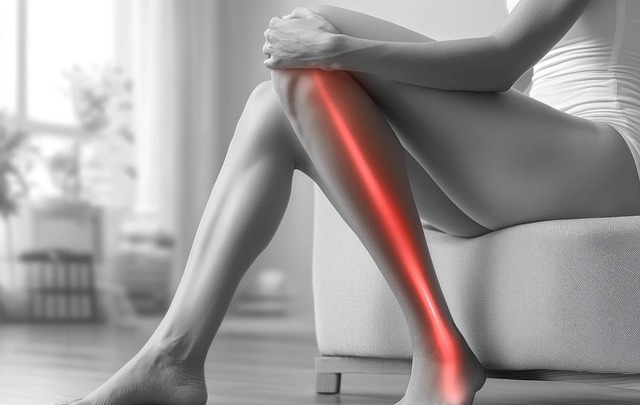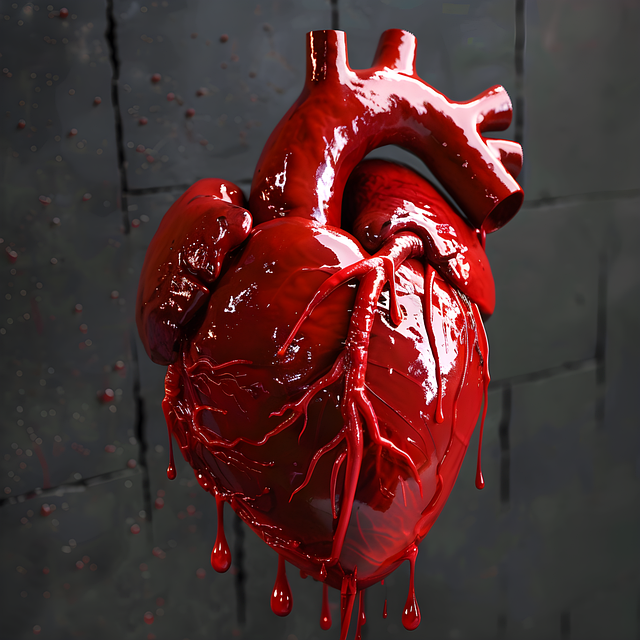Auto Accident Chiropractic Relief: Sciatica Pain Solutions

Auto accident chiropractic treatment for sciatica involves non-surgical adjustments to alleviate ner…….
In recent years, the demand for Pet Sitting and Dog Walking services has soared due to humanized pet.......
In the realm of healthcare, auto accident chiropractic treatment for sciatica has emerged as a specialized field, addressing a prevalent condition affecting millions globally. Sciatica, characterized by pain along the path of the sciatic nerve, is often a consequence of automotive accidents, leading to significant physical discomfort and disability. This article aims to delve into the intricacies of this treatment approach, exploring its definition, global impact, economic implications, technological advancements, regulatory landscape, challenges, case studies, and future prospects. By providing an in-depth analysis, we empower individuals affected by sciatica resulting from auto accidents to understand their treatment options and contribute to the broader discussion on healthcare improvements.
Definition: Auto accident chiropractic treatment for sciatica refers to a set of specialized chiropractic care practices designed to manage and alleviate pain associated with sciatica, specifically stemming from automotive injuries. It involves a comprehensive approach that combines manual adjustments, therapeutic modalities, rehabilitation exercises, and patient education. The primary goal is to reduce nerve compression, restore joint function, and promote overall healing.
Core Components:
Chiropractic Adjustments: Chiropractors use precise spinal manipulation techniques to correct subluxations (misalignments) in the spine, which can put pressure on the sciatic nerve roots. Adjustments may include high-speed adjustments, low-force techniques, or specific spinal mobilizations.
Therapeutic Modalities: These include various treatments like heat/ice therapy, ultrasound, electrical stimulation, and massage to reduce inflammation, ease muscle tension, and promote healing.
Rehabilitation Exercises: Customized exercise programs focus on strengthening the core muscles, improving flexibility, and restoring stability to support the spine and reduce the risk of future sciatica episodes.
Patient Education: Chiropractic physicians educate patients about their condition, self-care strategies, and lifestyle modifications to prevent recurring symptoms.
Historical Context: The concept of chiropractic care dates back to the late 19th century when Daniel David Palmer founded it in the United States. Over time, its application in auto accident-related injuries has evolved, gaining recognition for its effectiveness in managing pain and improving patient outcomes.
Auto accident chiropractic treatment for sciatica has a profound global reach, with significant variations in adoption and practice across regions:
| Region | Impact and Trends |
|---|---|
| North America | Leading the way in chiropractic care, the US and Canada have a well-established network of chiropractors specializing in auto accident-related injuries. Recent trends include increased integration of technology for diagnosis and treatment planning. |
| Europe | Many European countries have robust chiropractic healthcare systems. Germany, for instance, has a high concentration of chiropractors, with a growing emphasis on evidence-based practices and research collaboration. |
| Asia Pacific | The region is witnessing rapid growth in chiropractic care, driven by increasing health awareness and government initiatives. Japan and Australia have notable advancements in auto accident chiropractic treatment protocols. |
| Middle East & Africa | While the adoption rate is lower, there’s a growing interest in chiropractic care, especially in urban centers, where auto accidents are prevalent. |
Advanced Imaging: Modern diagnostic tools like MRI and CT scans provide detailed images of the spine and surrounding structures, aiding in accurate sciatica diagnosis and treatment planning.
Navigation Systems: Chiropractic physicians now utilize navigation systems to guide precise adjustments, ensuring safety and effectiveness.
Telehealth: The rise of telehealth allows remote consultations and follow-ups, expanding access to care, especially in underserved areas.
Wearable Technology: Devices that track patient progress, activity levels, and spine health are gaining popularity, enabling personalized treatment plans.
The regulatory landscape for auto accident chiropractic treatment varies globally:
United States: Chiropractors must obtain a Doctor of Chiropractic (DC) degree from an accredited program and pass state licensing exams. The National Board of Chiropractic Examiners sets standards for education and testing.
Canada: Similar to the US, chiropractors require a DC degree and provincial licensing. The Canadian Memorial University offers a recognized chiropractic program.
Europe: Each country has its own regulations, but many follow the European Directive on Recognition of Professional Qualifications, facilitating practice across borders.
International Organizations: Global bodies like the World Federation of Chiropractic promote evidence-based practice standards and advocate for patient rights.
Patient Expectations vs. Evidence: Some patients expect immediate relief, leading to potential dissatisfaction if treatment follows scientific principles that require time and consistency.
Insurance Coverage: While insurance often covers chiropractic care, navigating policies and maximizing benefits can be complex, especially in cases of extensive treatments.
Lack of Standardization: Variations in treatment protocols among chiropractors can result in inconsistent patient outcomes, highlighting the need for standardized guidelines.
Research Gaps: Further research is required to establish evidence-based guidelines for specific auto accident-related injuries and their long-term management.
Case 1: John’s Journey to Recovery
John, a 42-year-old truck driver, was involved in a severe car accident, suffering from intense left leg pain and numbness due to sciatica. He sought care from Dr. Sarah Lee, a board-certified chiropractic physician specializing in auto accidents. Her comprehensive approach included:
After several weeks of consistent treatment, John experienced significant pain relief and improved mobility. He continues regular check-ups to maintain his recovery and prevent future sciatica episodes.
Case 2: Maria’s Comprehensive Care
Maria, a young professional, was in a minor car crash, resulting in occasional sciatic pain in her right leg. She consulted Dr. David Chen, who recommended:
Maria’s proactive approach led to complete resolution of her sciatica symptoms, and she now receives periodic check-ups to maintain her spine’s health.
The future of auto accident chiropractic treatment for sciatica holds promise:
Personalized Medicine: Advancements in wearable technology and genetic testing will enable tailored treatment plans based on individual patient needs.
Integration with Primary Care: Increased collaboration between chiropractors and primary care physicians is expected, ensuring comprehensive and coordinated patient care.
Research Growth: Ongoing research will provide deeper insights into the mechanisms of sciatica, leading to more effective treatments and improved clinical outcomes.
Global Standardization: Efforts to establish international standards for auto accident chiropractic care will enhance consistency and quality worldwide.
In conclusion, auto accident chiropractic treatment for sciatica offers a promising approach to managing this common condition. As technology advances and research expands, the field is poised to deliver even more effective and accessible care to individuals affected by automotive injuries.

Auto accident chiropractic treatment for sciatica involves non-surgical adjustments to alleviate ner…….

After a car crash, persistent leg pain, especially with sciatica symptoms, requires attention. Auto…….

Auto accident chiropractic treatment for sciatica offers a non-surgical, conservative approach using…….

Auto accident chiropractic treatment for sciatica is a popular choice due to its effectiveness in ma…….

After a car crash, auto accident chiropractic treatment for sciatica offers a safe, non-invasive sol…….

Auto accident chiropractic treatment for sciatica provides a non-invasive solution to nerve pain in…….

Auto accident chiropractic treatment for sciatica involves manual adjustments and exercises to allev…….

Auto accident victims often experience severe sciatic nerve pain due to lower back trauma. Chiroprac…….

After a car crash, persistent leg pain, especially sciatica, can be managed through auto accident ch…….

Auto accident chiropractic treatment for sciatica focuses on non-invasive techniques like spinal adj…….